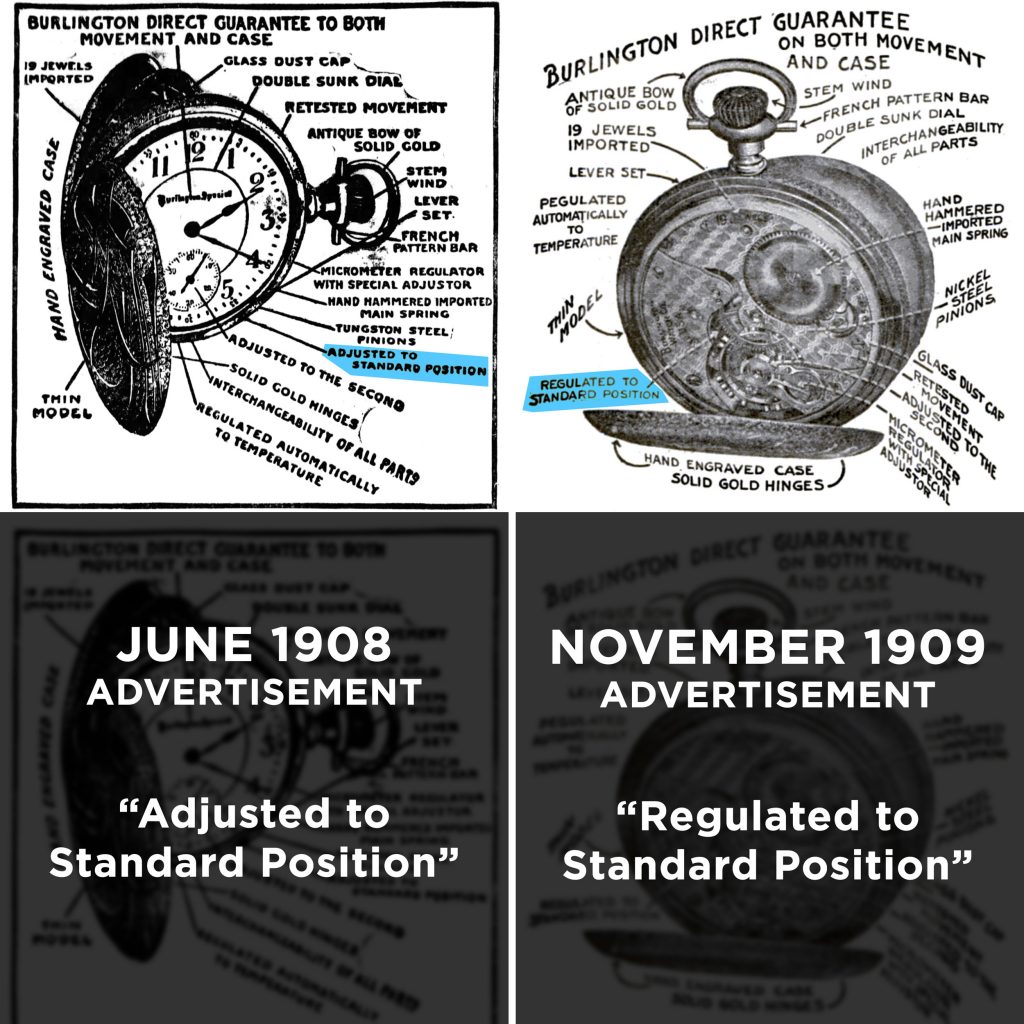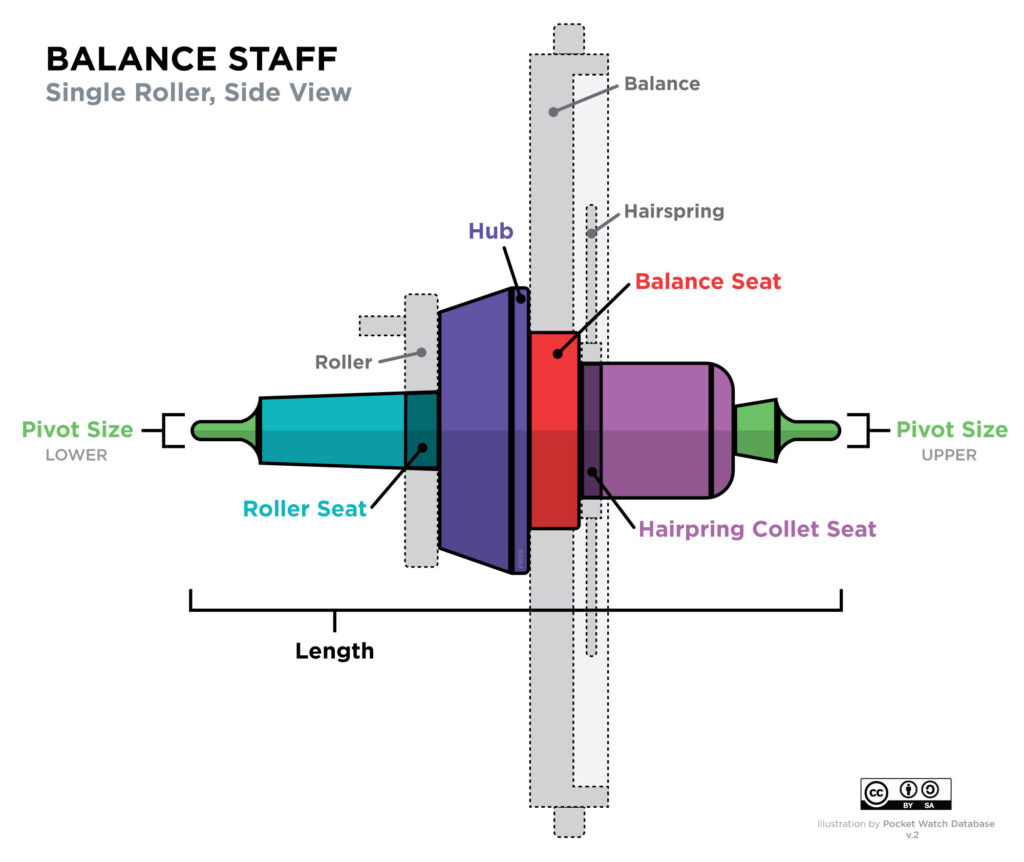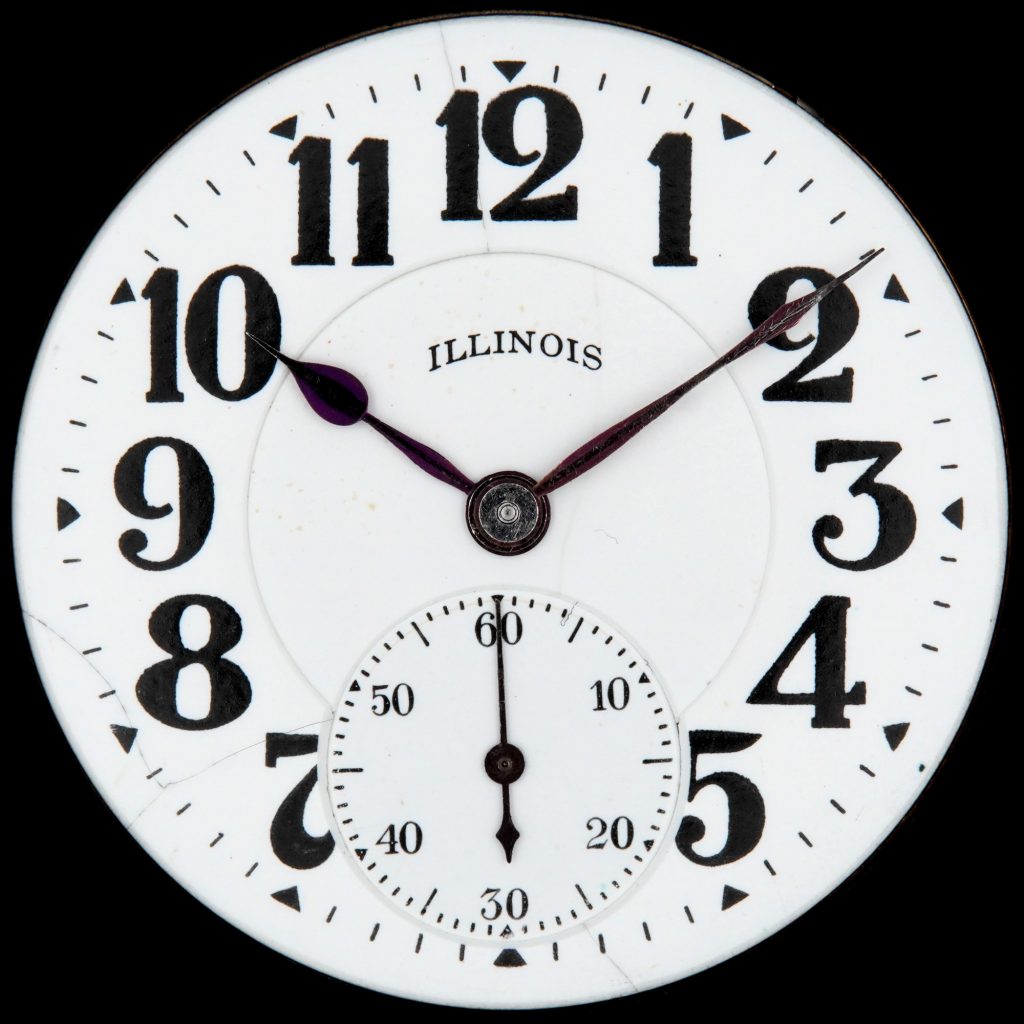Private Label Trade Names on American Pocket Watches: “Burlington Watch Co.” Part 8: Adjustment Confusion

The earliest advertisements promoting the “Burlington Special” claimed the watch was “Adjusted to Standard Position.” However, the advertisement published in the June 1908 issue of the Missouri Valley Farmer does not provide further details regarding the extent of adjustment.
When an illustration of the “Burlington Special” movement was included in a November 1909 advertisement published in Popular Mechanics, the description was modified to read “Regulated to Standard Position.” Again, the copy does not provide further details about the adjustments, if any, applied to the watch. Generally, the term “regulated” refers to the fine adjustment of the meantime screws and regulator and is not indicative of positional adjustments.
Both advertisements indicate the watch was “regulated automatically to temperature” and “adjusted to the second.” This terminology is rather peculiar. Temperature adjustment was conducted at the factory through a series of tests and subsequently changing the location of the balance screws to properly control the expanding and contracting of the balance under temperature extremes. This was a tedious process and required a skilled watchmaker to rate and adjust the watch accordingly. The term “regulated automatically to temperature” is a closer description of the intrinsic expanding and contracting of the balance due to the bimetallic composition, a standard feature of all conventionally jeweled movements during this era.
Some early 16-Size Burlington Special watches have been verified as marked “Adjusted to Temperature and Positions” [Illinois Watch #1965233]. However, most early movements are not marked with any adjustments.
Based on the intentional modification of terms in original advertisements and the variations of movement markings, it is reasonable to conclude that some of the early standard Burlington Special watches sold by the Burlington Watch Company were adjusted to temperature and positions while others were unadjusted.



